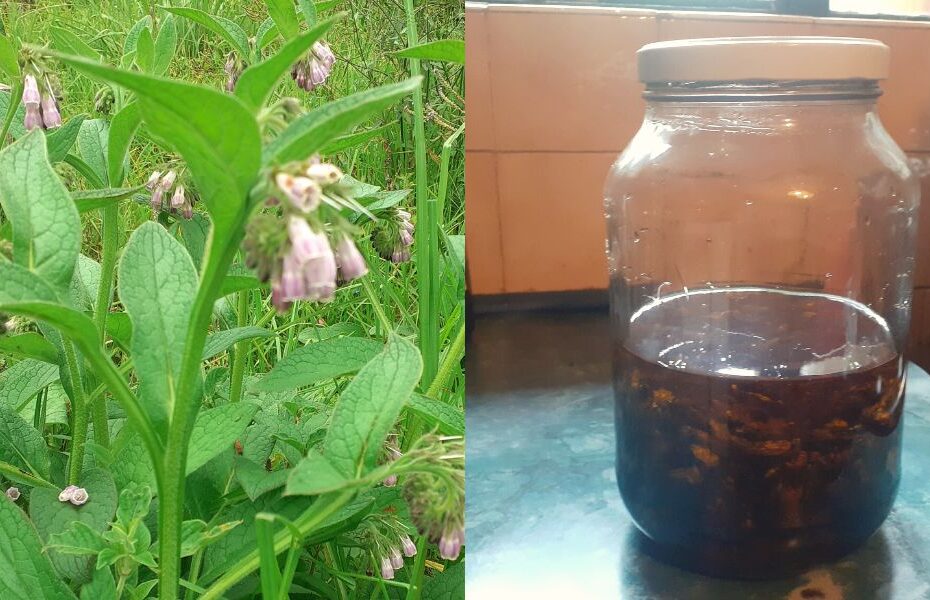[ad_1]
Comfrey accelerates the healing of any wound or injury, from burns to broken bones.
Also known as knit-bone, it stimulates cell growth and repair, healing injuries in record time. It has antibacterial properties and is a potent anti-inflammatory. It also minimizes scarring and relieves pain.
You can use any part of the plant to make oil, as long as it’s dried first. Fresh comfrey has a high moisture content which can quickly cause your oil to go rancid.
A Step-by-Step Tutorial on How To Make Comfrey Oil
This tutorial focuses on making a comfrey oil infusion, not to be confused with essential oils, which are made through distillation.
You can make comfrey oil by pouring oil over dried leaves and leaving it to infuse for a few weeks, but I don’t believe the end product is as effective as the one you get from the following method.
Getting Started
To make comfrey oil, you need the following ingredients:
- Comfrey root – dried and chopped
- Oil – I used organic olive oil, but you could also use grapeseed or almond oil
You’ll also need the following:
- A clean glass jar with an airtight lid
Preparing the Comfrey
There are two types of comfrey, the one that grows wild in the US and the one that’s native to the UK. Although wild comfrey (Cynoglossum Virginianum) has some medicinal properties, it’s not the same as comfrey or Symphytum officinale.
The only thing the two plants have in common is their name, so while you could make oil from wild comfrey, it wouldn’t have the same benefits.
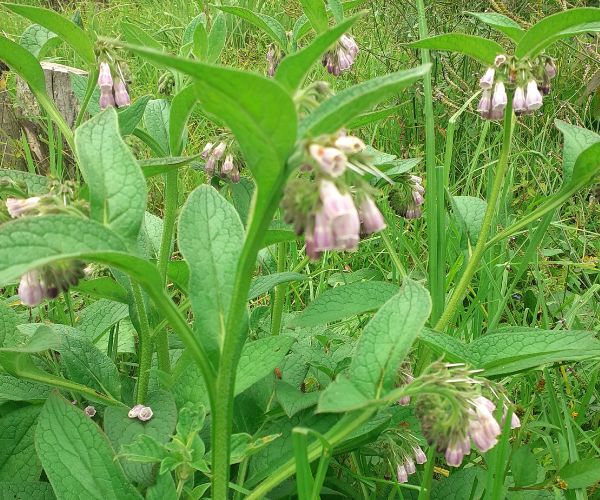
Step One: Harvest
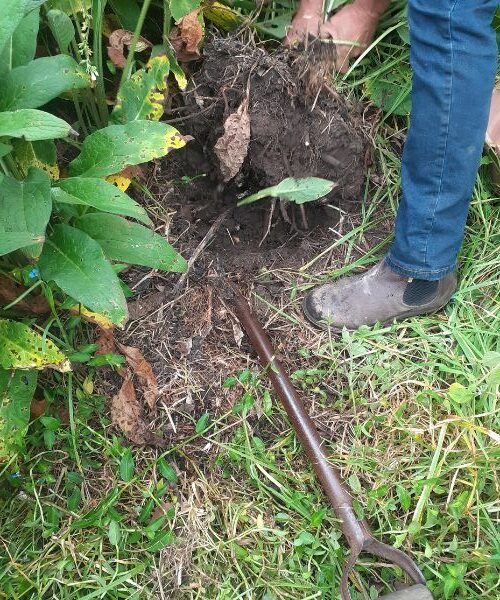
To harvest comfrey root, you need to dig deep. Comfrey has long, thick tap roots that descend up to six feet into the ground, which means you can’t retrieve them all without digging a sizable bunker first!
We contented ourselves with accessing the roots just a couple of feet under the surface. This is easier to do after rain when the soil is still soft.
To get started, insert a pitchfork into the earth underneath the comfrey plant and loosen the soil.
This process will expose the deep tap roots.
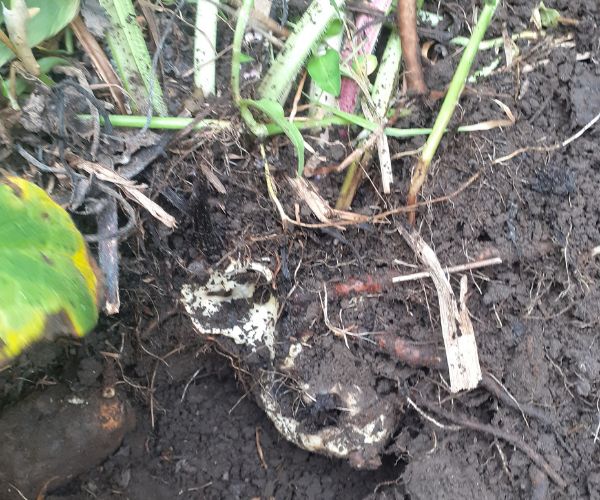
Use your hands to dig down deeper and break off pieces of root.
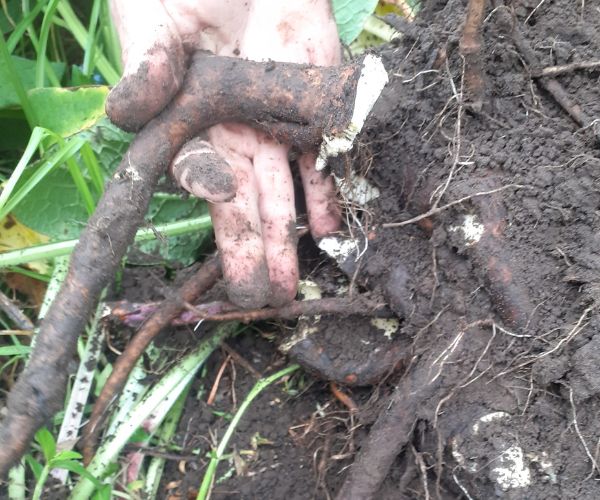
Once you’ve loosened the plant, you can pull up the remaining roots and the rest of the plant.
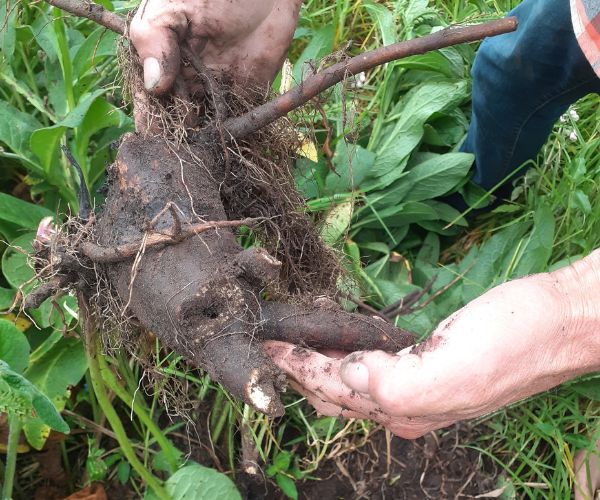
Step Two: Process
Remove the stalks and leaves until all you’ve left is the comfrey root.
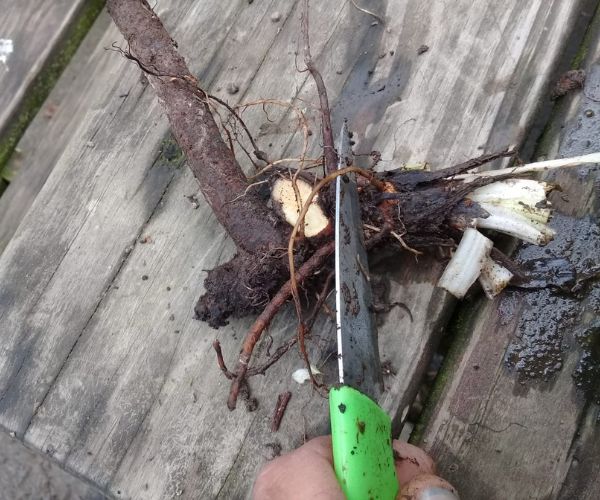
Wash the root thoroughly in clean water, using a brush or body scrub to remove the excess earth.
Tip: we use the string bags that oranges and onions come in to make recycled scrubs!
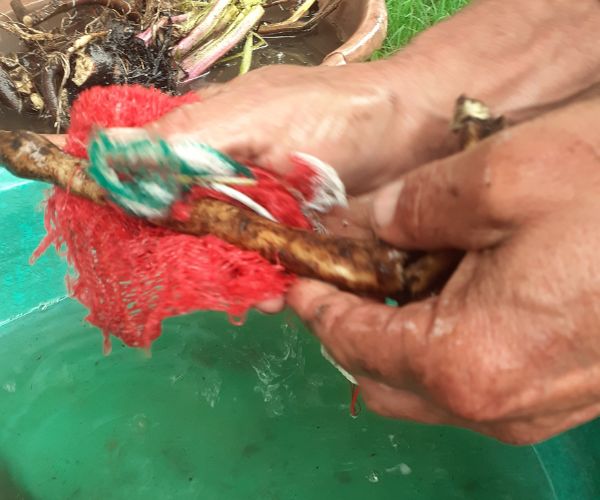
The root is very slippery when wet and exudes a gummy substance that makes it feel soapy.
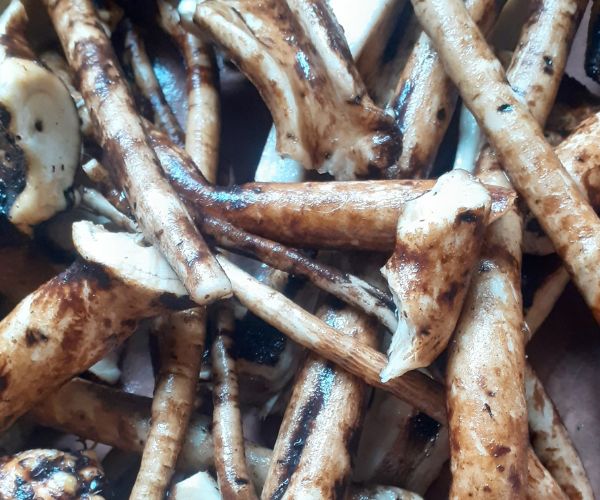
The roots are easy to chop, so if you’ve only got a small amount, you can quickly do it using a standard kitchen knife.
As we harvested many roots, we used a food processor to chop them into thin strips, figuring that the smaller the pieces, the quicker they’ll dry.
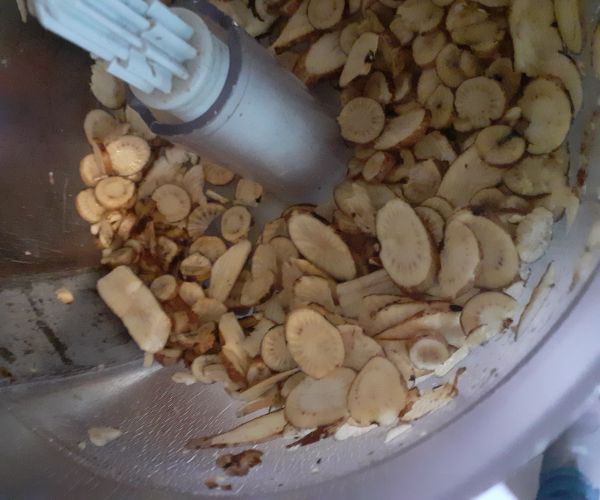
Depending on the weather, it takes a few days to a couple of weeks for comfrey roots to dry. We put ours in a solar dryer, and thanks to some frequent rain, it took nearly two weeks to complete the process. When ready to use, the roots should resemble crinkled-up autumn leaves!
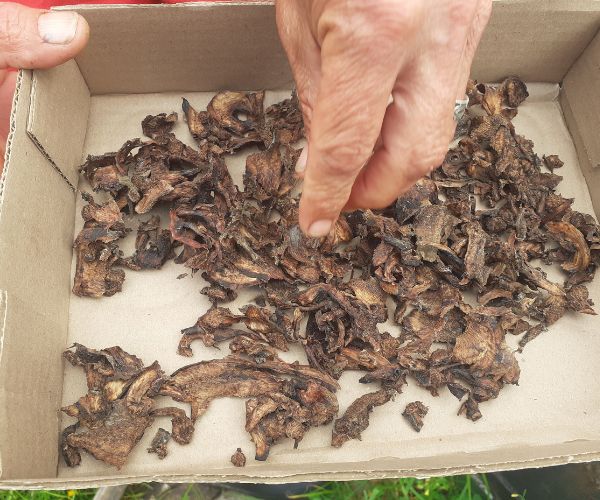
Making the Oil
Make sure you have enough oil to cover the comfrey root completely.
Heat your oil in a double boiler until it reaches approximately 167 to 176℉, and then remove it from the heat. Now add your dried comfrey root.
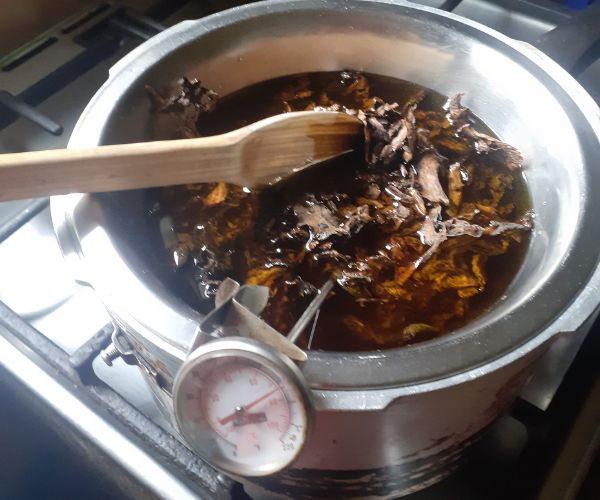
This temperature helps to kill any bacteria that may have developed on the root during drying, and kickstarts the infusion process. If you add the root at a higher temperature, it may reduce its potency.
While waiting for the oil to cool, sterilize your airtight jar by heating it in the oven or filling it with boiling water. Allow to dry.
Once the root and oil cool to around 100℉, transfer the mixture into your prepared airtight jar.
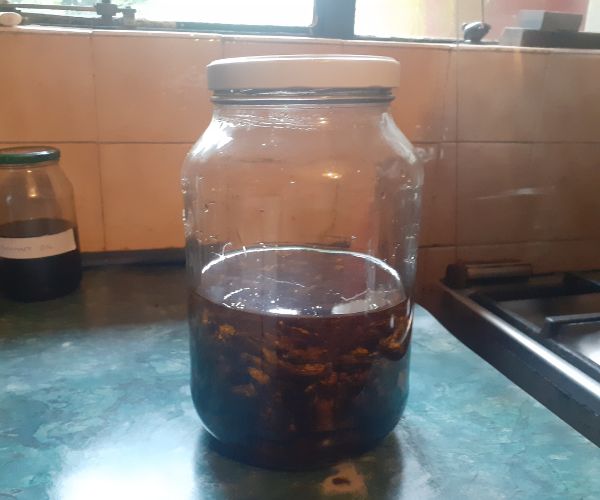
Leave to Infuse
Leave the jar with its magical contents somewhere warm to infuse for three to four weeks, making sure you give it a quick shake every other day.
After three to four weeks, your oil will be ready for use. Strain out the comfrey root and add it to your compost pile. Pour the remaining oil into a dispensing bottle, and add it to your survival first aid kit or bug-out bag.
Comfrey oil can last for one to two years, provided its kept at a cool temperature, out of direct sunlight.
Why Comfrey Oil Belongs in Your Bug Out Bag
On nearly every camping trip I’ve been on, someone has twisted an ankle, burnt themselves on a hot pan, or tripped over a tent peg. Comfrey oil is a quick and easy remedy for all these common problems and many more besides.
Comfrey oil can be used to:
- Reduce joint pain and inflammation
- Heal torn ligaments
- Reduce bruising
- Provide instant relief for burns
- Quickly heal burns and minor wounds
- Reduce the healing time for broken bones
- Alleviate sore muscles
Excellent for sports injuries, it is also an effective treatment for long-term health issues such as osteoarthritis and skin conditions, including windburn, chafing, scrapes, and cuts.
What Components Make Comfrey Oil So Powerful?
Both the roots and leaves of the comfrey plant contain allantoin, “a substance that helps new skin cells grow, along with other substances that reduce inflammation and keep skin healthy.” (source)
Rosmarinic acid gives the comfrey plant its anti-inflammatory and antioxidative qualities.
Safety Note: Do not use Comfrey internally, as it contains toxic pyrrolizidine alkaloids that can cause severe liver damage.
How To Use Comfrey Oil
Only use comfrey oil externally and in moderation. Comfrey’s healing ability is so potent that it’s not suitable for use on deep wounds. Comfrey can accelerate the healing in the outer layers of the skin to such an extent that it leads to abscesses and other complications.
To use comfrey oil to treat joint pain, sprains, muscle soreness, or broken bones, pour a little oil into your hand and then massage gently into the affected area.
If treating skin conditions, bruises, wounds, or burns, use your fingertips to apply the oil and rub it gently into the wound.
Although safe to use externally, medical experts recommend only using comfrey oil “in small amounts for less than 6 weeks,” as you could absorb the toxic pyrrolizidine alkaloids through your skin if you use it for an extended period.
Conclusion
Comfrey oil is a fast and effective way to relieve sore joints and muscles, strains, sprains, and even broken bones. It heals burns in record time and can accelerate the healing of minor wounds, scrapes, and bruises. In other words, comfrey oil heals all the most common injuries and conditions experienced by adventurers, camping enthusiasts, and survivalists.
Making comfrey oil isn’t a particularly speedy process, but the end product will keep healing wounds and relieving pain for up to two years, making it a worthwhile investment.
If you can get your hands on fresh comfrey leaves, you can use these to make poultices to treat all of the conditions discussed earlier, but that’s unlikely to happen in a survival situation. A much better approach is to make your own comfrey oil and stash it in your bug-out bag or first aid cabinet.
Further Reading
[ad_2]
Source link
